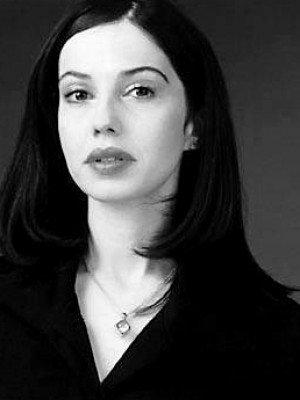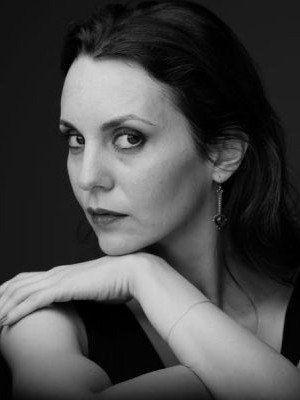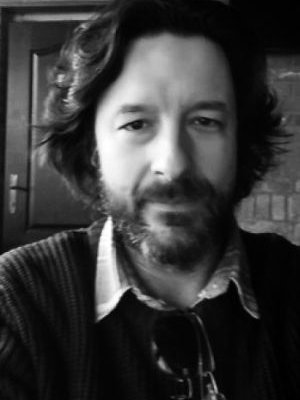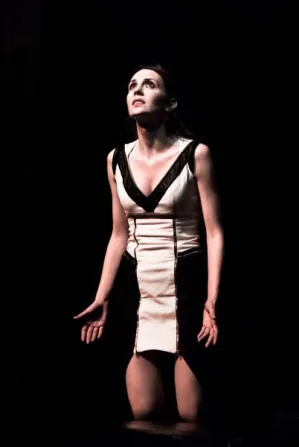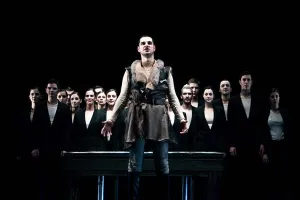Life is a dream
drama by Pedro Calderon de la Barca

LIFE IS A DREAM
Life is a Dream is the story of Segismundo, a Polish prince, imprisoned from birth by his father, King Basilio, as a result of omens and prophecies predicting disaster of the kingdom. Act I reveals that Basilio has deci¬ded, twenty years later, to give his son an opportunity to rule, and in order to do so he has him transported secretly to the palace under the influence of a powerful drug. Act II sees Segismundo awakening in the palace and, informed of his new power, proceeding to take revenge on those who have wronged him in the past or displease him in the present: his jailer, Clotaldo; his father, Ba¬silio; a prince, Astolfo; a young woman, Rosaura; and an upstart servant. Convinced that the omens were true, Basilio imprisons his son again and instructs Clotaldo to in¬form him that the palace experience was merely a dream. When in Act III Segismun¬do is released by soldiers supporting his claims to the throne, he is unable to decide if he is dreaming or not, but feels he should behave more prudently. Confronting those people he previously saw in his “dream”, he resists the impulse of the moment and, having defeated his father in battle, forgives him. The prophesy that he would see his father at his feet is fulfilled, but in a way which rejects vengeance in favour of forgi¬veness.
* * *
The sources of Calderons play are many, The story of the awakened sleeper occurs in the Arabian Nigh ts as well as in the work of Spanish writers from the 14th century. The theme of the individual seeking to avoid, but merely con fi rmj ng, what is foretold was also common, as in the collection of stories, Barlaam and Josaphat. And the idea of life is fleeting and dream-like was central to both oriental and Christian religions. But the direct source of Life is a Dream was Calde¬ron’s earlier play written in collaboration with Antonio Coello, Yerros de naturalezay aciertos de la fortuna, in which, despite differences of detail, the basic ideas are the same: a prince who recovers his throne; a young man, who, apparently unfit to rule, learns to do so, suggesting in the process that men can shape their destiny. Life is a Dream is, however, a much more complex play. The idea that men can shape their destiny is linked now both to the pro¬cess of self-doscovery and to the realisation that the objects of human ambition – power, wealth and pleasure – are insubstantial in comparison with true spiritual values. (…) In terms of the complex interlocking of incident and cha¬racter in a meaningful and illuminating way, Life is a Dream is one of Calderon’s most accomplished plays. Like Don Juan, Segismundo is one of the truly memorable characters of 17th-centu¬ry Spanish theater: a man-beast initially at the mercy of his volatile emotions, subse¬quently bewildered by his inexplicable chan¬ges of fortune, and finally groping his way towards agreaterunderstandingof himself and his fellow-men. But the play has other interesting characters too (…) The gallery of brilliantly drawn cha¬racters answers the charge that Calderon was much more interested in plot than in characterisation. (…)
Calderon’s languange, here as elsewere, is highly stylised, even “operatic”. Segismundo’s opening soliloquy, for example, is not unlike an aria, as are other long speeches in the play. They reveal Calderon’s liking for repetition, symmetry, and pattern in the structure of his verse, as well as an overall sense of musicality. The effect of such stylisation is not, however, to mute or straightjacket the emotional charge of the lines but, by channeling it into a disciplined form to intensify it further. In emotional terms the language has enormous range, from the violence of Segismundo’s outbursts to his lyrical praise of female beauty. Life is Dream, written in a strongly Catho¬lic climate, is not a religious play, though it does, in a more general way, expound the theme of the triumph of free will, at the heart of Calderon’s particualr brand of Ca¬tholicism. Rather is a play aboutamanatany time in any place, at the mercy of deficencies and without himself, and struggling to over¬come them. It is this more general relevance which accounts for its lasting appeal and allows for varying interpretations that may embrace existentialism on the one hand or the efforts of postwar Poland to resist Soviet authoritarianism on the other.
Gwynne Edwards
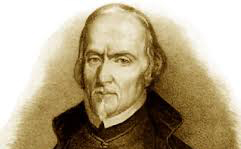 PEDRO CALDERÓN DE LA BARCA (Jan. 17, 1600—May 25, 1681)
PEDRO CALDERÓN DE LA BARCA (Jan. 17, 1600—May 25, 1681)
Poet and playwright Pedro Calderón de la Barca is generally regarded as one of Spain’s finest dramatists. He initiated what many call the second style of Spanish Golden Age theater, publishing and perfecting the dramatic forms and genres that his predecessor, Lope de Vega, established. Calderón’s father, a fairly well-to-do government official who died in 1615, was a man of harsh and dictatorial temper. Strained family relations apparently had a profound effect on the youthful Calderón, for several of his plays show a preoccupation with the psychological and moral effects of unnatural family life, presenting anarchical behaviour directly traced to the abuse of paternal authority. Destined for the church, Calderón matriculated at the University of Alcalá in 1614 but transferred a year later to Salamanca, where he continued his studies in arts, law, and probably theology until 1619 or 1620. Abandoning an ecclesiastical career, he entered the service of the constable of Castile and in 1623 began to write plays for the court, rapidly becoming the leading member of the small group of dramatic poets whom King Philip IV gathered around him. In 1636 the king made him a Knight of the Military Order of St. James. Calderón’s popularity was not confined to the court, for these early plays were also acclaimed in the public theatres, and on the death of Lope de Vega (1635) Calderón became the master of the Spanish stage. His literary activity was interrupted for ten years, 1625-1635, by military service in Italy and the Low Countries, and again for a year or more in Catalonia. In 1637 he became a Knight of the Order of Santiago, and in 1651 he entered the priesthood, rising to the dignity of Superior of the Brotherhood of San Pedro in Madrid. He held various offices in the court of Philip IV, who rewarded his services with pensions, and had his plays produced with great splendor. He died May 5, 1681. The creation of complex dramatic patterns in which the artistic effect arises from perception of the totality of the design through the inseparability of the parts is Calderón’s greatest achievement as a craftsman. In his technique poetic imagery, characters, and action are subtly interconnected by dominant symbols that elucidate the significance of the theme. Although rhetorical devices typical of the Spanish Baroque style remained a feature of his diction, his verse developed away from excessive ornamentation toward a taut style compressed and controlled by a penetrating mind. The depth and consistency of his thought, his supremely intelligent craftsmanship and artistic integrity, his psychological insight, and the rationality and humanity of his moral standards make him one of the major figures of world drama. He wrote secular plays, where mythological themes predominate, with a more or less allegorical treatment: The Surgeon of His Honour (1635), Life is a Dream (1635), The Mayor of Zalamea (c. 1640), The Daughter of the Air (1653); religious plays, where he usually followed the tradition established outside Spain by the Jesuit drama, based on stories of conversion and martyrdom, usually of the saints of the early church: The Constant Prince (1629), The Wonder-Working Magician (1637), The Joseph of Womankind (c. 1640); seventy-six of allegorical plays – autos sacramentales – the peculiar Spanish allegorical development of the medieval mystery, written for open-air performance on the Feast of Corpus Christi: Belshazzar’s Feast (c. 1630), There Is No Fortune but God (c. 1652), The Lord’s Vineyard (1674), The Merchant’s Ship (1674), The Faithful Shepherd (1678); he also wrote zarzuelas – The Garden of Falerina (1648), and operas: The Purple of the Rose (1660), Jealousy Even of the Air Can Kill (1660), besides a considerable number of farces...
Alexander A. Parker | Copyright © 1994-2011
Encyclopædia Britannica, Inc. (www.biography.com)
www.imagi-nation.com | www.gutenberg.org
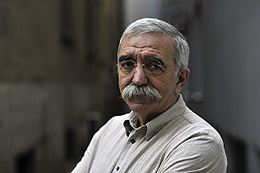 SLOBODAN UNKOVSKI
SLOBODAN UNKOVSKI
He was born in 1948 in Skopje. He graduated directing in 1971 from the Film, Theatre and Television Academy in Belgrade in the class of Prof Vjekoslav Afrić. In period 1971-1981, he was a director and artistic manager of the Drama Theatre in Skopje, a lecturer at the Faculty of Dramatic Arts in Skopje (1983-1987); as a holder of Fulbright Grant he taught directing at the University of New York (1987/88), and at Harvard University, Cambridge, MA USA, he taught acting and directing (1988/89). In 1990, he was “Artist-in-Residence” in the American Repertory Theatre in Cambridge, Ma USA, and in the National Theatre, Athens. In period 1996-1998, he was Minister of Culture with the Government of the Republic of Macedonia. Now he works as a professor of directing at the Faculty of Dramatic Arts in Skopje and he is in charge of post-graduate studies of directing. Slobodan Unkovski is one of the most significant directors of ex-Yugoslavia, and with playwright Goran Stefanovski (whose ten plays he staged), he represented a tandem of authors who managed to express theatrical views of one whole generation of artists. Although the beginnings of his career coincided with the period of flourishing of the so-called director’s theatre (one of his first performances Nothing – based on Arthur Kopit’s text, was a radical experiment and it was pronounced best at Sarajevo’s MESS), Unkovski remains true to the dramatic text. In his plays, all theatrical components are optimally expanded, (from set design and costume to sound, scenic movement, music, light design), and they are always in some sort of a perfect balance with the text and acting; any playwright can only wish that Unkovski would direct the first production of his play (and the list of playwrights is impressive...from Goran Stefanovski, Milica Novković, Rudi Šelig, Dejan Dukovski... to Milena Marković). Nonetheless, his craftsmanship in directing is most clearly shown in cooperation with actors; a whole array of unique actor’s creations was accomplished in Slobodan Unkovski’s performances. Unkovski an internationally recognised artist whose productions represent a turning point not only in the work of individual artists, but also in theatres he worked in. Critic Kevin Kelly in the Boston Globe called his direction of Brecht Caucasion Chalk Circle a milestone. The production took place in American Repertory Theatre in Cambridge, USA, the theatre where, among other important artist, Robert Wilson also directed. His Proud Flesh by Stefanovski for Drama Theatre, Skopje, Beautiful Vida by Šelig for Chamber Theatre 55, Sarajevo, Croatian Faust by Šnajder and Theatrical Illusions by Corneille for the Jugoslav Drama Theatre represent such dates in history. Productions directed by Slobodan Unkovski took part in various European theatrical festivals: Croatian Faust by S.Šnajder at the Theatre of Nations in Nancy 1984; Powder Keg by D.Dukovski at the Bonn Biennial 1996; Railway Tracks by Milena Marković at Wiesbaden Biennial 2004; in addition, he participated three times at Bitef (1975, 1980, 1991), at international theatre festivals in Caracas (Venezuela), Bogotá (Columbia), Chividale (Italy), London (Great Britain), Summer Festival in Hamburg, Dubrovnik Summer Festival, Split Summer Festival. At the Sterijino Pozorje Festival he was a guest 11 times and he won 5 Sterija Awards:
Jane Zadrogaz, G. Stefanovski (Special Sterija Award for the Best Play, 1975); Proud Flesh, G.Stefanovski (Special Sterija Award for Directing, 1980); Croatian Faust, S.Šnajder (Sterija Award for Directing, 1983); Happy New 1949, G. Mihić (Sterija Award for Directing, 1985); Tower of Babylon, G.Stefanovski ( Sterija Award for Directing, 1990).
Some of the more important productions directed by S. Unkovski are:
Jane Zadrogaz by G.Stefavovski, Drama Theatre, Skopje; Proud Flesh by G.Stefavovski, Drama Theatre, Skopje; Tattooed Souls by G.Stefanovski, Little Brona Theatre, Moscow; Caucasian Chalk Circle by B. Brecht, American Repertory Theatre, Cambridge, USA; The Fourth Sister by Januš Glovacki, National Theatre, Athens; The Winter Tale by W. Shakespeare, American Repertory Theatre, Cambridge, USA; Peer Gynt by H Ibsen, Slovenian National Theatre, Ljubljana; Sarajevo by G. Stefanovski, international co-production (Sweden, Belgium, Germany); Theatrical Illusion by P. Corneille, Yugoslav Drama Theatre, Belgrade; Powder Keg by D. Dukovski, Yugoslav Drama Theatre, Belgrade; The Misanthrope by J. B. P. Molliere, Slovenian National Theatre, Ljubljana; Oreste by Euripides, National Theatre of Northern Greece, Thessalonica / Epidaurus.
Premiere performance
Premiere, 23. january 2012 / Main Stage
Translated by Nikola Milićević
Director Slobodan Unkovski
Set Designer Meta Hočevar
Costume Designers Jelena And Svetlana Proković
Dramaturge Slavko Milanović
Stage Speech Lјilјana Mrkić Popović
Composer Irena Popović
Stage Movement Slobodan Unkovski
Stage Movement Assistant Bojana Mišić
Premiere Cast:
Basilio, the King of Poland Predrag Ejdus
Segismundo, the Prince Nikola Rakočević
Astolfo, Duke of Moscow Boris Pingović
Clotaldo, an old man Boris Komnenić
Clarion, the jester Bojan Dimitrijević
Stella, the Princess Nataša Ninković
Rosaura, a lady Nada Šargin
The Palace of Dreams: Marijana Pejatović, Sara Joksimović, Milica Janketić, Nikola Ranđelović, Dejan Dedić, Maja Lukić, Milica Janković, Miloš Lalović, Marko Mak Pantelić, Nevena Ristić, Ivan Zablaćanski, Nemanja Stamatović, Sonja Kovačević, Milena Živanović, Vaja Dujović, Iva Stefanović, Marija Stokić, Matija Živković, Lazar Đukić*
* students from the Department of Acting at the Faculty of Dramatic Arts, Prof. Biljana Mašić, Gordana Marić
Assistant Director Bojana Lazić
Assistant Director-Volunteer Dejan Janković
Producer Jasmina Urošević
Stage Manager Saša Tanasković
Prompter Gordana Perovski
Light Operator of Miodrag Milivojević
Make-up Dragoljub Jeremić
Set crew Chief Nevenko Radanović
Sound Operator Perica Ćurković
THE SET AND COSTUMES WERE MANUFACTURED IN THE NATIONAL THEATRE
Translated by Nikola Milićević
Director Slobodan Unkovski
Set Designer Meta Hočevar
Costume Designers Jelena And Svetlana Proković
Dramaturge Slavko Milanović
Stage Speech Lјilјana Mrkić Popović
Composer IREna Popović
Stage Movement Slobodan Unkovski
Stage Movement Assistant Bojana Mišić
Cast:
Basilio, the King of Poland Predrag Ejdus
Segismundo, the Prince Nikola Rakočević
Astolfo, Duke of Moscow Boris Pingović
Clotaldo, an old man Boris Komnenić
Clarion, the jester Bojan Dimitrijević
Stella, the Princess Nataša Ninković
Rosaura, a lady Nada Šargin
The Palace of Dreams: Marijana Pejatović, Sara Joksimović, Milica Janketić, Nikola Ranđelović, Dejan Dedić, Maja Lukić, Milica Janković, Miloš Lalović, Marko Mak Pantelić, Nevena Ristić, Ivan Zablaćanski, Nemanja Stamatović, Sonja Kovačević, Milena Živanović, Vaja Dujović, Iva Stefanović, Marija Stokić, Matija Živković, Lazar Đukić*
* students from the Department of Acting at the Faculty of Dramatic Arts, Prof. Biljana Mašić, Gordana Marić
Assistant Director Bojana Lazić
Assistant Director-Volunteer Dejan Janković
Producer Jasmina Urošević
Stage Manager Saša Tanasković
Prompter Gordana Perovski
Light Operator of Miodrag Milivojević
Make-up Dragoljub Jeremić
Set crew Chief Nevenko Radanović
Sound Operator Perica Ćurković
THE SET AND COSTUMES WERE MANUFACTURED IN THE NATIONAL THEATRE




